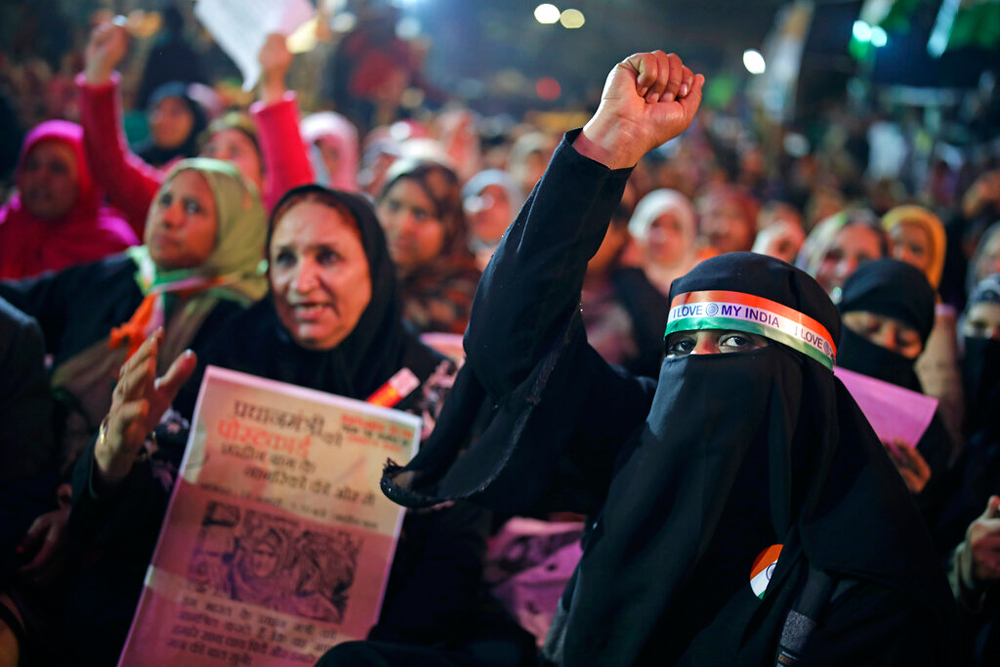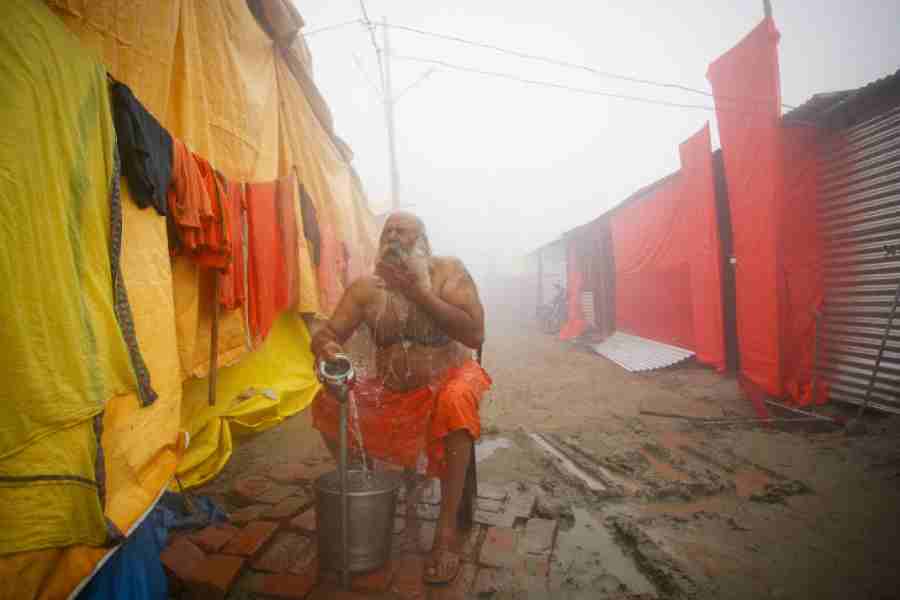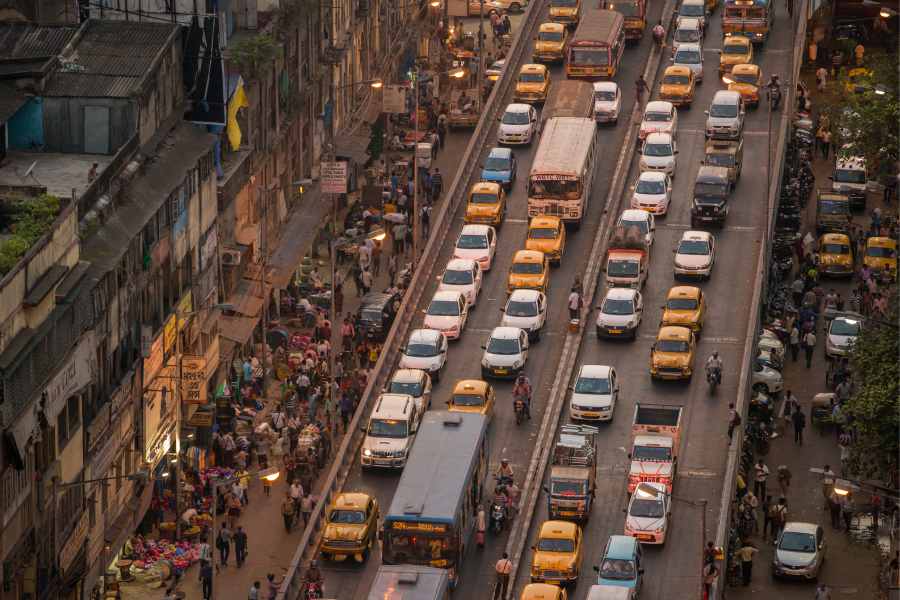Till the other day, Shaheen Bagh was an unknown place on the outskirts of Delhi. Now the women are writing a new history there. Through them Shaheen Bagh has become a symbol of women determination and empowerment in the battle for safeguarding the unity of India.
The small township has inspired tens of thousands of women in other parts of the country to come out and join the struggle against CAA, NRC and NPR. Narendra Modi, Amit Shah and other protagonists of the CAA could never have imagined that a nationwide protest movement with such a magnitude would emerge against their move.
But contrary to their thoughts, a different and massive movement sprang up spontaneously almost everywhere. The proponents of the CAA projected it as India's first magnanimous measure to provide dignified asylum for the persecuted from three neighbouring countries. But they never explained convincingly why this magnanimity was extended for those persecuted in the three countries alone. They are yet to explain why the number of religions was strictly restricted to only six.
Their bitter antagonism against the Muslims was part of their political design born out of their Hindu Rashtra ideology. According to that ideological strait, Muslims are the first among the three internal threats to the country. The other two are the Christians and communists (Bunch of Thoughts, Golwalkar).
The CAA, NRC, NPR exercises are to be viewed as the integral part of a grand master plan. The women folk of Shaheen Bagh looking deep into the developments around them could understand the hidden goal behind the move.
Against the ideological and political offensive of the RSS-BJP, it was the Indian campuses that first rose in protest across the country. All of a sudden, the higher places of learning became the fortresses of resistance. The Constitution of India, its philosophy, ethos and morality were discussed and debated. The Constitution in the seventh decade of its existence became a vibrant phenomenon, when we the people began to read it with a new insight. The very preamble to the Constitution took the shape of the sword and the shield in the valiant battle of the people in defence of democracy and secularism.
JNU, Jamia, Jadavpur, Lucknow and other universities were in the forefront. Students, barring the supporters of the RSS-controlled ABVP, turned out to be front-rankers in the country-wide protest movements. Now, Shaheen Bagh represents the determination of the mothers to join their daughters and sons.
It was so shocking for the government that these developments were out of their perception. The fascist intention was to divide the nation between “we” and “them”, which they learned from the Hitlerite school. For Hitler, “we” meant the descendants of Aryan blood and “they” meant the Jews. For the Indian Hitlerites, “we” mean Hindus and “they” mean the Muslims.
Their calculation was that the conflicts on the CAA, the NRC and the NPR would lead to polarisation between the Hindus and the Muslims. They dreamt that through that polarisation, all the Hindus would rally behind them, leading to the absolute isolation of the Muslims.
But the people of India proved that they are not so naive and silly to dance to the tune of the RSS game plan. The debates that rippled through the campuses reached the intellectuals and common people and its waves have conquered the hearts of men and women with equal intensity.
The country witnessed a new awakening through which a different sort of polarisation took place that saw the RSS-BJP completely isolated on one side and the rest of India united on the other side. The master brains of the RSS-BJP were so desperate that they unleashed ruthless oppression against the students.
In JNU, RSS hooligans from outside have entered the hostels and beaten up students, teachers and staff. At Jamia, it was the armed police who behaved as the conquering army. The girls and boys of that great institution drew unforgettable examples of courage and fighting spirit on that eventful day of December 15.
Little girls stood as unbeatable fighters in front of armed policemen with their fingers pointed to the might of state power. Some of them had red roses in their hands that they wanted to exchange for the weapons of the oppressors. Many of them were badly beaten. Some of them have broken their heads and arms.
These boys and girls are not cowards as the RSS thought them to be. They stood for India, her unity and secular fabric like a rock. They proclaimed that they will never allow India to become a Hindutva version of Pakistan. Literally with their blood, sweat and tears, they wrote on the walls of contemporary Indian history the saga of a generation who understands the idea and ideology of India.
When in the neighbourhood of Shaheen Bagh, their mothers and sisters read those inscriptions, they started a new phase of resistance with their own will. It is mainly the women who are leading the struggle. For more than one month, they are there on the streets, day and night. Braving the cold, singing songs, chanting slogans, listening to speeches, they sit there in a peaceful and disciplined manner. The mothers in the morning go to their homes, cook food, send their children to schools and return.
Shaheen Bagh was considered as the underbelly of developed Okhla which used to be the dumping yard of the rich. The majority in that neighbourhood are Muslims by faith. But at every step they are aware it is not a religious battle that they are waging. It is a secular battle in which hundreds of Hindus, Sikhs and others are part of.
Shaheen Bagh has become a rallying point of hundreds and thousands of people. Men and women from various walks of life have gathered together there to sing the songs of unity and secularism. Artists, writers, singers, dancers, intellectuals and working people have come together to Shaheen Bagh to sing the songs of glory of India, secular and democratic. They have to fight the forces of hatred with the weapon of love in their heart and soul.
There may be forces around who may try to inject communal venom into this people’s movement. But the men and women thronging the streets of Shaheen Bagh in their thousands know very well that they can spare no space for such divisive elements.
When the desperate government and its brutal force try to pounce on them, any attempt to disorient the movement from its secular track would be a defeatist step. The people of Shaheen Bagh know that religious fundamentalism and religious faith are not the same. With that knowledge, they have built this platform of peaceful resistance, upholding the spirit of the Indian Constitution.
Shaheen Bagh has inspired similar movements in other parts of the country, too. The workers’ and peasants’ movement which came to the battlefront on January 8, raising the question of economic exploitation, along with the questions of citizenship, need to hold their hands together with such movements of students and women.
A new India determined to resist the fascist oppressors has awakened. The people are on the move. The time has come when the people have declared that they are not ready to live as they have lived before. It is a qualitatively new situation. The forces of social change have to understand the challenges and possibilities of this developing scenario. The fighting students and women, peasants and workers look upon them.
Binoy Viswam is the secretary of Communist Party of India, National Council, and leader of the party in Parliament











